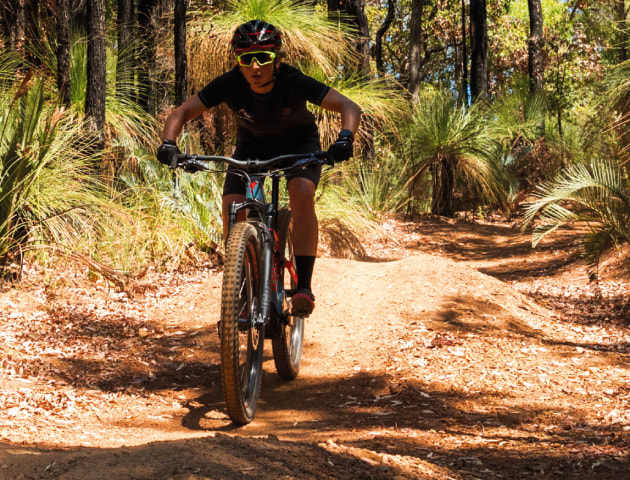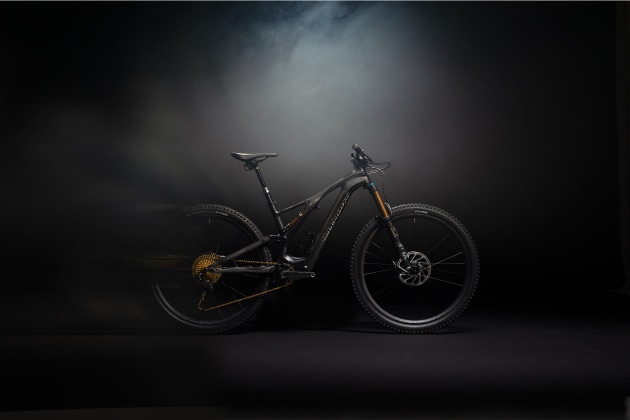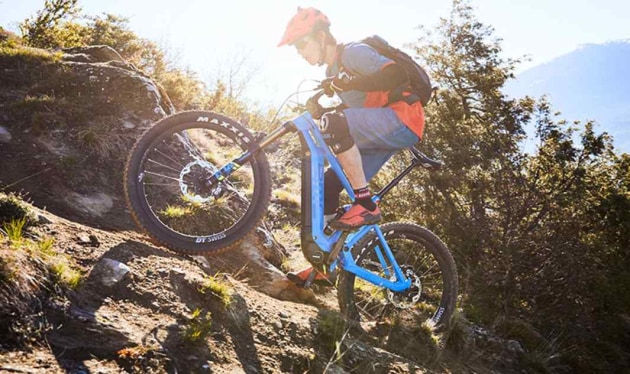SKILLS: Training with e-MTBs
First up, a quick re-cap on what e-MTBs are and aren’t. Most commercial offerings from the big manufacturers are pedal assist bikes, meaning that for the motor to engage and propel you forwards, you must pedal. This means that you don’t have a throttle and you do actually have to put in some effort (albeit sometimes not very much) to give you a boost.
Legally, their assisted speed is capped at 25km/h, which is plenty enough juice for out on the trails. Obviously you can go faster than 25km/h, but that has to be under your own steam or downhill. Here in the Hunter household, we have just invested in a new addition to the toy cupboard - a Specialized Turbo Levo. We did procrastinate a fair bit about this purchase, but the two-pronged argument of it enabling you to spend more time doing the things you love (i.e. mountain biking) and a substitute for the hubby’s daily car commute won the day.
Just recently, I posted a photo of the new Levo on social media, and was surprised at just how divisive it was. My friends were polarised into one of two camps - lovers or haters! What I can say to the haters out there is don’t pass judgment until you've ridden one, you may find yourself jumping the fence pretty rapidly! The e-MTB has so many uses and applications for all types of riders, so in this article I'm going to cover how to train and ride with an e-MTB and get the most from your investment.

1. More time on the downhills
Essentially, your battery-powered beast is not only a bike but your own personal shuttle service too. For riders whose goal is to get as much downhill practice as possible during a session, it makes perfect sense to use an e-MTB. Typically you'll be able to climb twice as fast as you would under your own pedal power, which should translate to twice as much time descending with a massive smile on your dial. The bike will certainly feel different to your regular MTB, feeling heavier underneath you, but the added weight of the bike will actually make it faster on the downhills, thus improving your reaction times. The bike is really only as fast as the technical skills of its rider, so the ability to ride downhill for longer really pays dividends if your aim is to improve the technical competence of your riding.
Do note, however, that when you switch back to your normal rig, it will feel very responsive and lively, so I wouldn’t exclusively ride the e-MTB for prolonged periods of time if your aim is to improve your skills on your regular rig, otherwise you'll get a fair shock when switching over. Once or twice a week on the e-MTB should give you the right mix in addition to a few rides on the regular MTB. The extra weight of the e-version will also give your upper body a decent workout if you're riding hard on the downhills, so don’t be surprised if your back and shoulders feel like you’ve done 10 rounds with Mike Tyson the next day! I view this as a real positive, though, as mountain bikers need strong upper bodies to control the bike on technical terrain, and as some of the trails being built these days are getting more and more gnarly, a strong upper body is becoming increasingly important for getting the most out of your riding and racing.
2. Returning from injury
Many e-MTBs have different levels of assistance. If you're allowed to ride but are limited by doctor’s orders then the battery option is the perfect solution to getting out of the house and doing a little bit of exercise. As your recovery progresses you can then either reduce the assistance level on the bike or perhaps use the full range of the battery to ride for longer. Either way, the battery assistance provides a fantastic graded return to riding. Note that there's one small caveat to this – be aware of how much the bike weighs. All e-MTBs are 20kg plus, so lift and carry with care - the last thing you want is to put your back out getting it in the car!

The Specialized Turbo Levo SL
3. Getting off the couch and returning to regular exercise
Some people see the road back to any from of fitness as so insurmountable they simply don’t know where to start. When riding an e-MTB, you're still exercising but at a much lower effort level. In 2018 there was a systematic review of all research papers related to the health benefits of e-MTBs, and it concluded that there was moderate evidence that riding with assistance improves cardiorespiratory fitness in physically inactive individuals. The intensity of these rides was classed as moderate, which was less than conventional riding, but more than walking; so it’s still working out, but at a manageable and achievable level. I see the e-MTB as a great way to keep mountain bikers riding at all ages even if their fitness levels may have lapsed over time. There's nothing better than seeing the smile on the dial of a rider’s face after a fun day of mountain biking, where before they loved the downhill but dreaded the uphill, had to stop multiple times on the way back up and generally felt terrible.
4. Levelling the playing field
This is far and away my favourite application of the e-MTB. What I've noticed as me and my riding buddies get older is our fitness levels have drifted apart. We were once all pretty similar, but some have got fitter, some less fit and riding all together doesn’t happen as much as it used to. It's too slow for some and downright unpleasant suffering for others. Here, the e-MTB comes into its own and allows all riders across all ages and all fitness levels the chance to spend a day out of the trails.
5. Group rides – pacing for you mates
Two riders, two different goals for the ride. How many times has this happened to you? You want to ride with your best mate, but they're training for some crazy MTB race with 3,000m of vertical climbing, and you’re... well, you're just not! Jumping on the e-MTB will enable you to ride the uphill sections as ferociously (if not more) than your mate, hopefully inspiring them along the way. The 5-hour training session they invited you on is, instead of something to be avoided, now a breeze! If you want to up your effort level on any climb then you have the controls at your disposal to dial back the assist and work harder. No longer do you have to think about the uphill sections and whether you can make it to the top. You can also become the pacemaker for them if they’d like. Simply set your level of pedal assist and off you go, shouting words of encouragement (or barbs to light a fire) to really make the most of their session.

6. Recovery rides
A recovery ride by definition should place little to no load on the body. The level of effort involved in the recovery ride should be so little that you can complete the ride while breathing easily through your nose. If at any point you find yourself switching to mouth breathing, then you're going too hard. For many of us, we don’t have the luxury of terrain that enables a pure recovery ride, and there are always sections of hills which make true recovery rides difficult. Enter the e-MTB. Suddenly you can ride your bike every day without fear of overtraining. Tired, sore legs are still able to recover all while getting out and feeling the wind through your helmet!
7. Your daily commute or second car substitute
Having invested big dollars in an e-MTB means you'll want to get the most out of your new toy, right? Even though it’s a mountain bike, it doesn’t mean you can’t ride it on the road or on cycle paths. Using an e-MTB to commute to and from work will make your daily journey a breeze. Yes, it might be a wee bit annoying with the motor cutting out when it reaches 25km/h, but you’re not out to win the Commuter Cup - leave that to the roadies! And, if you want more of a workout on one of your rides either to or from work, try switching the motor off for a couple of low cadence intervals of 3-10 minutes, then recovering in between efforts with the motor assisting. I can assure you, your leg strength will increase rapidly using this method, and all while you fly by the cars and buses stuck in the traffic!




